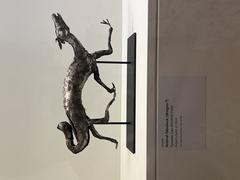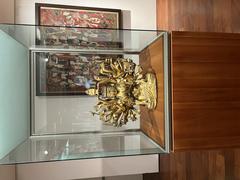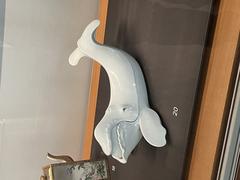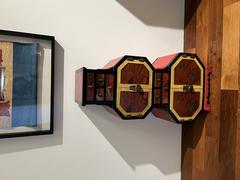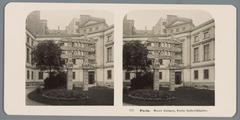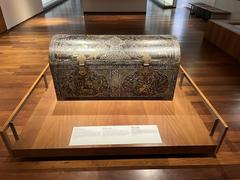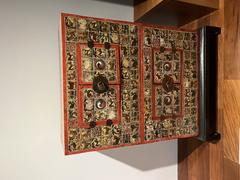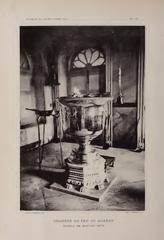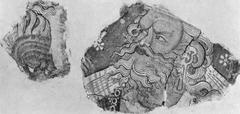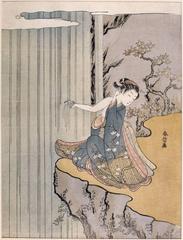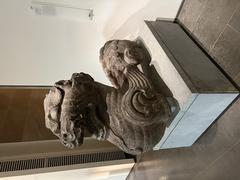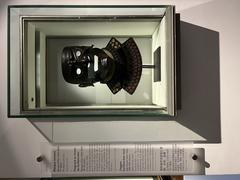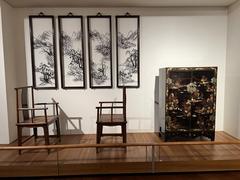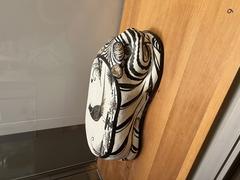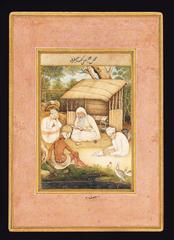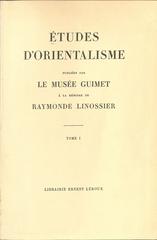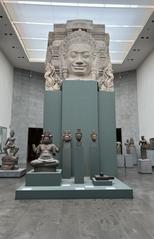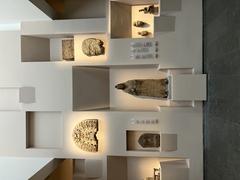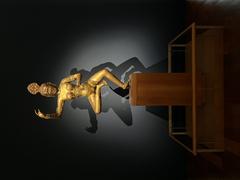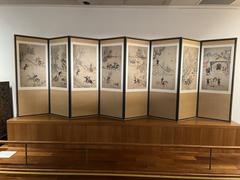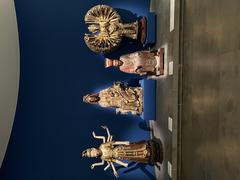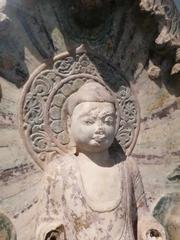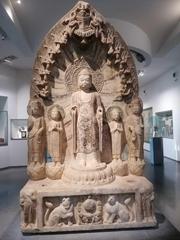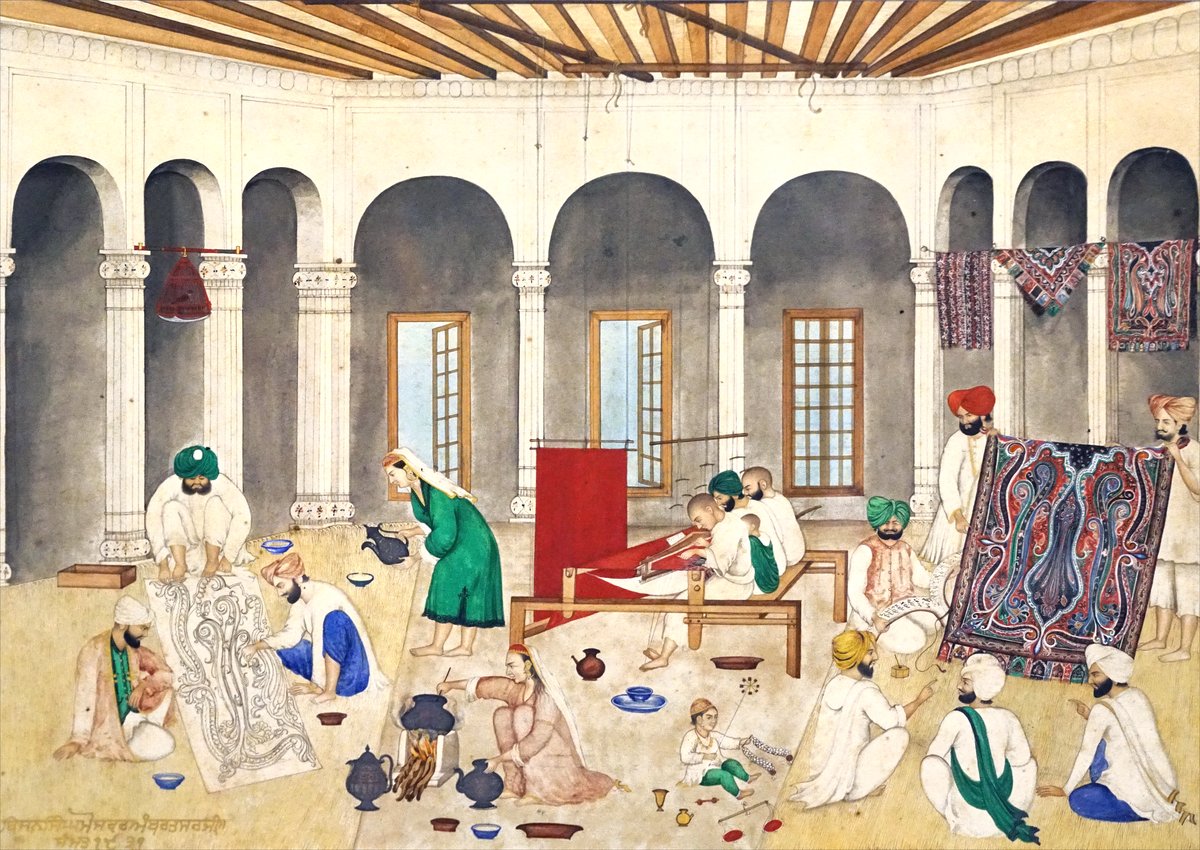
Guimet Museum Paris: Visiting Hours, Tickets, and Historical Significance Guide
Date: 14/06/2025
Introduction
The Guimet Museum (Musée National des Arts Asiatiques – Guimet) is a premier destination for anyone interested in Asian art and culture, set in Paris’s 16th arrondissement. Founded by Émile Étienne Guimet in 1879, the museum was conceived as a space to foster the comparative study of Asian religions and civilizations. With more than 70,000 objects spanning over five millennia, it now stands as one of the world’s richest repositories of Asian art outside Asia. Visitors to the Guimet Museum can experience the diversity of Asian heritage through rare sculptures, paintings, ceramics, textiles, and manuscripts, all within a stunning neo-Greek building. The museum’s location—close to the Eiffel Tower and Trocadéro Gardens—makes it a convenient and culturally rewarding stop on any Paris itinerary (travelfranceonline.com; guimet.fr; parisdigest.com).
Historical Overview
Origins and Vision
Émile Étienne Guimet, a French industrialist and avid collector, established the museum in Lyon in 1879 to showcase his collection of Asian religious artifacts. Motivated by his travels throughout Asia, he sought to promote understanding of Eastern religions and civilizations. Recognizing the need for greater reach, Guimet relocated the museum to Paris in 1889, coinciding with the closing of the 4th Exposition Universelle (travelfranceonline.com).
Architectural and Institutional Development
The museum’s original building, designed in a striking neo-Greek style by Charles Terrier, features a prominent rotunda and a historic library. Over time, the museum expanded, adding the Panthéon Bouddhique in 1991 for Japanese art, and underwent a major renovation in the late 1990s to modernize its galleries. A 1945 agreement with the Louvre allowed the Guimet to focus exclusively on Asian art, further consolidating its collections (buddhistdoor.net).
Legacy and Significance
Today, the Guimet Museum holds more than 70,000 pieces, including large holdings of Chinese, Japanese, Korean, Indian, Himalayan, and Southeast Asian art. Its photographic archives and rare manuscripts are invaluable for research and education, and the museum remains at the forefront of cultural exchange, scholarship, and dialogue on Asian art and heritage (buddhistdoor.net).
Visiting the Guimet Museum
Hours & Tickets
- Open: Tuesday to Sunday, 10:00 AM – 6:00 PM (last admission at 5:15 PM)
- Closed: Mondays and certain public holidays (check website for details)
- Extended Hours: Thursday evenings until 9:00 PM for select events and exhibitions
- Admission: €12–€13 for adults; reduced rates for students and seniors; free for EU residents under 26 and all visitors under 18; the Paris Museum Pass is accepted
- Where to Buy: Online via the official website or at the museum
(guimet.fr; parisdigest.com; Northleg)
Accessibility
- The museum is wheelchair accessible, with ramps and elevators throughout most galleries. Some historic areas may present challenges; check the accessibility page for details.
Getting There
- Address: 6 Place d’Iéna, Paris 75116
- Metro: Iéna (Line 9)
- Bus: Lines 32, 63, 82, 92
- Nearby: Trocadéro Gardens, Eiffel Tower, Palais de Tokyo
Highlights of the Collections
The Guimet Museum’s galleries are organized geographically and thematically, making it easy for visitors to explore the full breadth of Asian art and civilization.
Chinese Art:
Over 20,000 objects, from Neolithic pottery to imperial porcelain, archaic bronzes, Buddhist sculptures from the Silk Road, and masterpieces of calligraphy (parisdigest.com; paristopten.com).
Indian Subcontinent:
Sculptures from the Indus Valley to the Chola period, Mughal and Rajput miniature paintings, and ornate courtly jewelry.
Himalayan Art:
Tibetan thangkas, Nepalese bronzes, ritual objects, and deity sculptures.
Southeast Asia:
Monumental Khmer sculptures from Angkor, Cham art from Vietnam, and Javanese bronzes.
Japanese Art:
11,000+ works, including ceramics, samurai armor, ukiyo-e prints, and contemporary pieces; the Hôtel d’Heidelbach hosts a Japanese tea pavilion (parisdigest.com; sortiraparis.com).
Korean Art:
Celadon ceramics, ritual masks, textiles, and calligraphy, representing one of Europe’s finest Korean collections.
Central Asia and the Silk Road:
Artifacts illustrating Eurasian exchanges, including Buddhist stucco figures, Gandhara sculptures, and Begram ivories.
Special Exhibitions and Cultural Events
- Gold Ming: The Splendors and Beauties of Imperial China (Sept 2024 – Jan 2025): Highlights Ming dynasty imperial artifacts.
- Bronzes Royaux d’Angkor, un Art du Divin (April – Sept 2025): Khmer bronzes from Angkor.
- The museum also regularly hosts film screenings, family workshops, lectures, and cultural festivals like “Khmer Vibes” (guimet.fr; sortiraparis.com).
Amenities and Visitor Services
- Han Rooftop Café: Seasonal Korean cuisine with Eiffel Tower views
- Museum Shop: Books, prints, and Asian-inspired gifts
- Cloakroom & Restrooms: Available on multiple floors
- Audio Guides & Maps: Multilingual materials available, with guided tours offered for deeper exploration
Tips for Visiting
- Arrive early to avoid crowds, especially on weekends
- Allocate at least 2–3 hours for your visit
- Photography (no flash) is generally allowed in permanent galleries
- Download the museum’s official app or pick up a map to navigate the galleries
- Check the calendar for special events and temporary exhibitions
Frequently Asked Questions (FAQ)
Q: What are the opening hours?
A: Tuesday–Sunday, 10:00 AM–6:00 PM; closed Mondays and holidays.
Q: How much is admission?
A: €12–€13 adults; free for EU residents under 26 and all under 18.
Q: Is the museum wheelchair accessible?
A: Yes, with ramps and elevators; some areas may have limitations.
Q: Are guided tours available?
A: Yes, in several languages; check at the museum or online for availability.
Q: Can I take photos in the museum?
A: Non-flash photography is allowed in permanent collections; restrictions may apply for special exhibitions.
Conclusion and Call to Action
The Guimet Museum is a vital cultural link between Asia and Europe, offering an unparalleled journey into the art, spirituality, and history of Asian civilizations. Its vast collections, innovative exhibitions, and vibrant educational programs make it a cornerstone of Paris’s museum landscape. Whether you are a scholar, a family, or a curious traveler, the Guimet invites you to discover Asia’s legacy at your own pace.
Plan your visit by checking current opening hours and ticket options on the official website. For an interactive experience, download the Audiala app and follow our updates on Paris’s top museums and cultural events.

